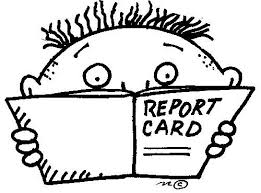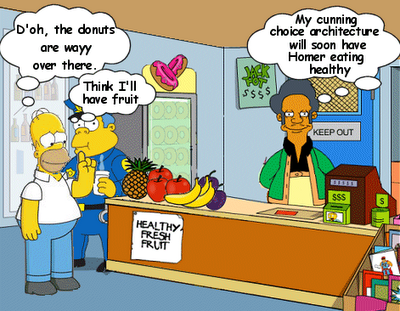 I got a D in English when I was a sophomore in high school. I don’t remember who my teacher was or if I liked him or her. I don’t remember who I sat next to in class. I don’t remember being yelled at by mom or dad; it’s likely they expressed their deep, deep concern I do remember the D.
I got a D in English when I was a sophomore in high school. I don’t remember who my teacher was or if I liked him or her. I don’t remember who I sat next to in class. I don’t remember being yelled at by mom or dad; it’s likely they expressed their deep, deep concern I do remember the D.
I do remember the tutor mom hired: Ms. Susie Wyatt. She lived near the high school, had short, dark hair, wore crisply ironed shirt dresses, spoke softly and had a pleasant smile at the ready. I don’t remember if I put up a fuss to be tutored. I do remember feeling a bit ashamed when I first met her. After all, now a stranger knows. That feeling didn’t last long because Ms. Wyatt never expressed a doubt about my ability. She didn’t make the D a big thing.
Ms. Wyatt taught me how to diagram sentences. I drew perpendicular lines to divide the subject from the verb and diagonal lines for the adjectives and adverbs. Spotting gerunds became my forte. Incomplete sentences never. I’m sure her assignments got harder over time, but I didn’t notice. I was gaining mastery and power over what had previously stumped me. I was also gaining mastery over myself.
A nudge in time
Ms. Wyatt turned an academic problem into a puzzle and showed me how to solve it. The D became a B. Even better, I gained confidence in my ability to learn. After graduating college with a degree in English and Psychology, plus a teaching certificate, I taught high school for 10 years in Columbus Ohio’s public system. Yes, I taught English to teens. I absolutely loved it. (No, I didn’t teach sentence diagraming.)
In the context of time, the event of 6-8 weeks of tutoring is insignificant. In the context of the potential to impact me and my future, that same event appears mighty. At the age of 14, I did not see the future context. Thank goodness my mom did. Thank goodness I was nudge-able.
What’s a nudge?
 Thaler and Sunstein, authors of Nudge (http://nudges.org/) define a nudge as any aspect of the choice architecture that alters people’s behavior in a predictable way without forbidding any options or significantly changing their economic incentives. Nudges are not mandates. They must be easy and cheap to avoid. They can’t be perceived as “making” someone do something. Putting the fruit at eye level counts as a nudge. Banning junk food does not.
Thaler and Sunstein, authors of Nudge (http://nudges.org/) define a nudge as any aspect of the choice architecture that alters people’s behavior in a predictable way without forbidding any options or significantly changing their economic incentives. Nudges are not mandates. They must be easy and cheap to avoid. They can’t be perceived as “making” someone do something. Putting the fruit at eye level counts as a nudge. Banning junk food does not.
The authors advise us to offer nudges that are most likely to help, least likely to inflict harm. Some of you may remember a time when we didn’t recycle – we just lumped everything together as trash for the landfill. Then, color bins nudged us. (Check out this nudge to pick up litter: https://www.youtube.com/watch?v=cbEKAwCoCKw.) At the SJ airport I’ve seen new nudges: bins with 3 labels: Recycle, Trash, Landfill. I’ve even seen some with a picture of a landfill to further nudge us toward not consuming staff that must go into the landfill.
Monty Python: Nudge, Nudge, Wink, Wink, Say no more
Nudges can be creative fun (take the stairs, not escalator: ex., https://www.youtube.com/watch?v=2lXh2n0aPyw) as well as confrontational (ex., the cowboy who sings about not dying from tobacco through a voice box because cancer destroyed his larynx, http://theinspirationroom.com/daily/2007/truth-singing-cowboy/). They can be unsavory, up-to-no-good (ex., too many fashion and political links to list). Of course, it all depends on your view.
Thaler and Sunstein tell us there are certain times when nudges are needed. Research shows that people need nudges for decisions that are difficult and infrequent or rare (ex., getting married or asking for a tutor), for which they do not get prompt feedback (ex., eating high-fat diet for years without warning signs until the heart attack or ignoring known conflicts within the team without warning signs of severe unproductivity and low morale), and when they have trouble translating aspects of the situation into terms that they can easily understand (choosing whether to file Ch. 11 or bankruptcy; choosing the right Medicare plan).
Be a conscious nudger
We can’t avoid influencing people’s choices. Whether we are conscious of it or not, whether we intend it or not, we nudge each other all the time. We nudge each other with what we say, what we withhold, with the stories we wrap around the facts of what happened, with our body language. Each conversation has the potential to nudge both the speaker and the listener toward a beneficial behavior or to knock them back into a past of unwanted behavior. The point isn’t to avoid nudging. The point is to be responsible nudgers.
- Who did you nudge recently? Was it received as you intended? Not sure? Ask them. If their view of your nudge was not as you intended, tell them your intention and go from there.
- Who nudged you recently? If you perceived it was in the direction of your development and success, did you thank them? If they are no longer around, I’m sure you can find someone to thank for a nudge. If it wasn’t, reframe and reinterpret it or let it go so the nudge doesn’t lead to a grudge.
- What do you want to nudge? Examine your personal work habits, your team’s performance, your customer’s behaviors. What nudges would encourage better performance naturally?
Nudges require understanding humans you work and live with. Start with yourself. If you want to influence others, get conscious about how and what nudges you. Get conscious of the nudges you generate.
To nudge or not to nudge isn’t the question, it’s the opportunity: the opportunity is to shape the future by nudging people toward it today.
Subscribe
Get Camille's latest posts!
